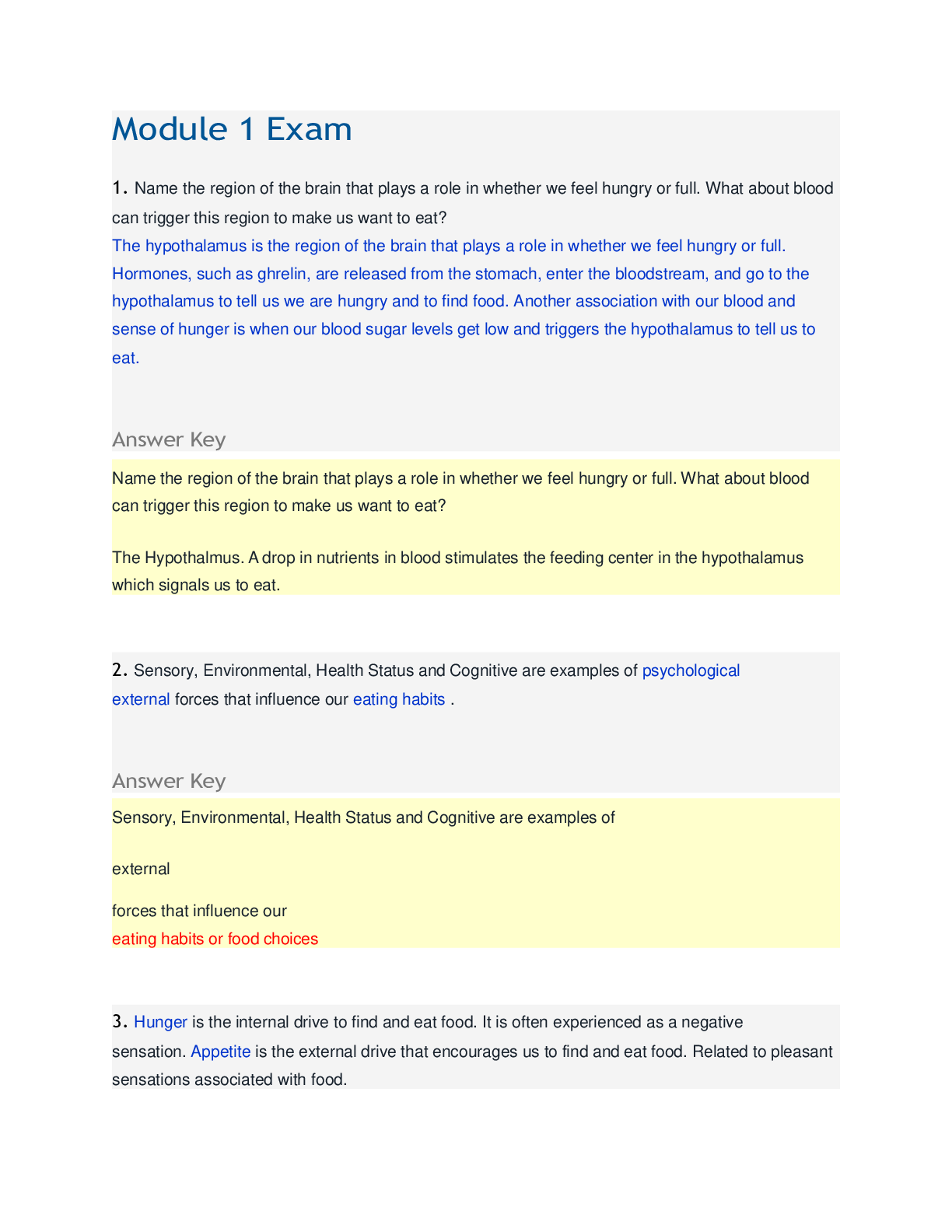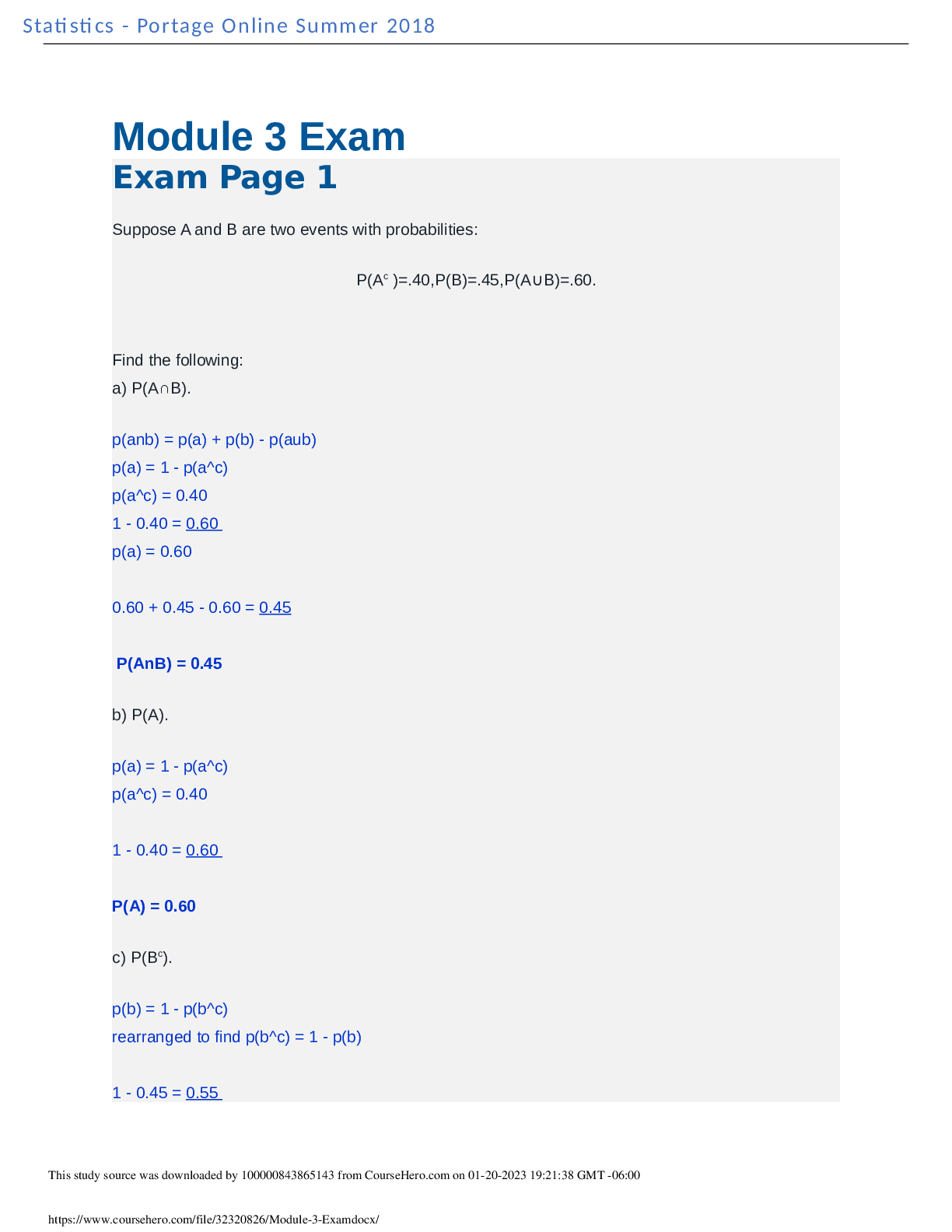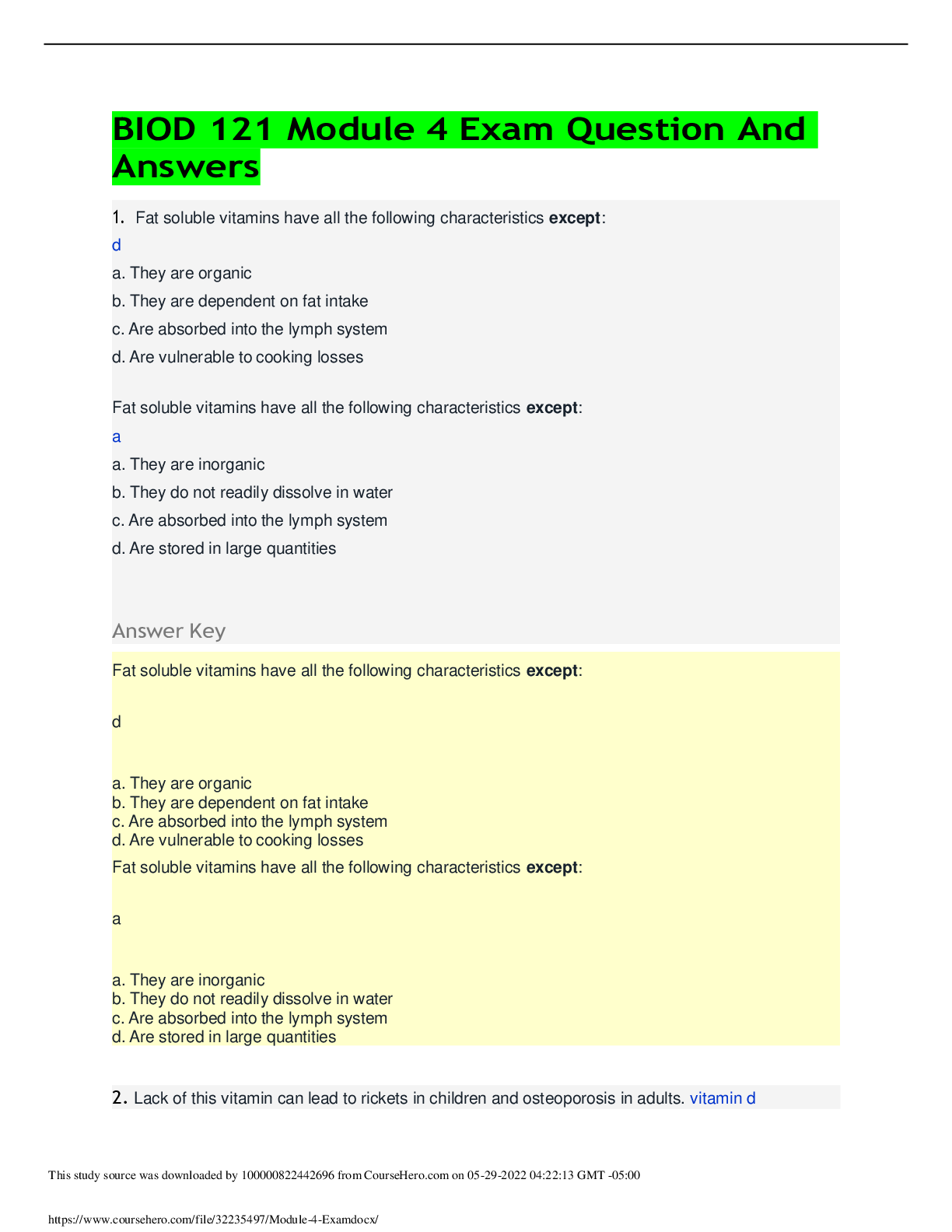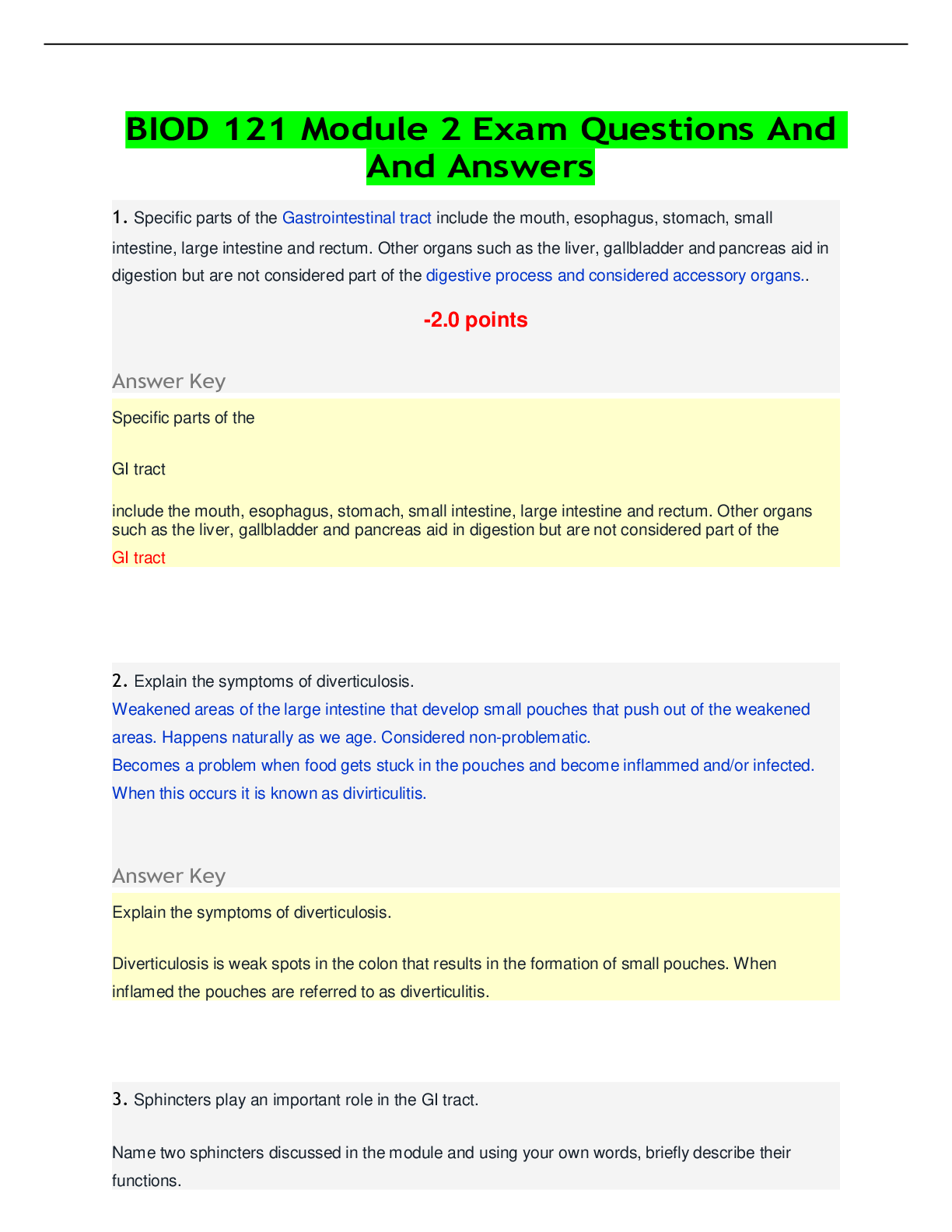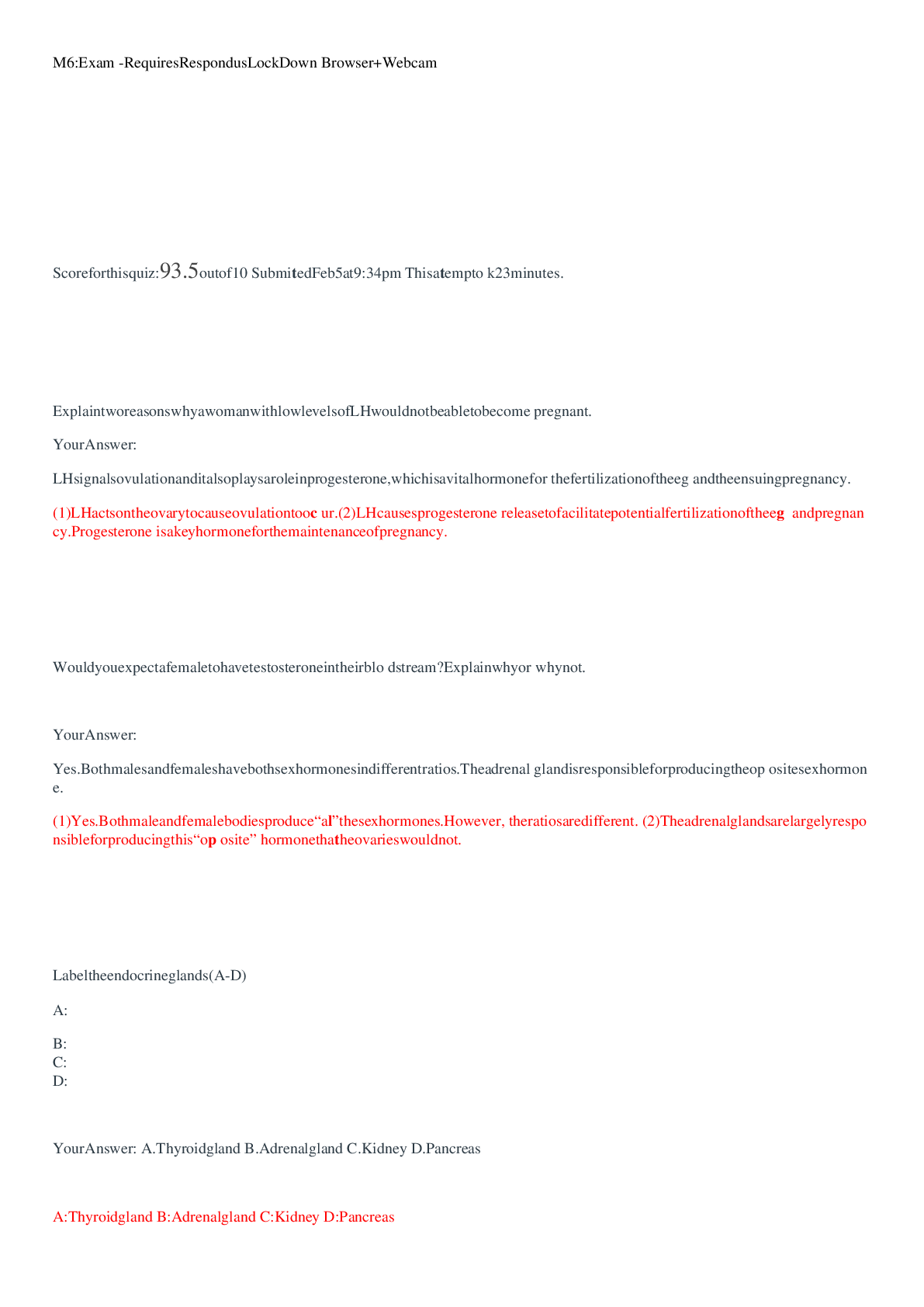Biology > QUESTIONS & ANSWERS > Module 5 Exam BIOLOGY questions with answers (All)
Module 5 Exam BIOLOGY questions with answers
Document Content and Description Below
Determine the maximum heart rate and the target zone for a 55 year old. Maximum heart rate 220 - 55 = 165 target zone 165 x 0.6 = 99 to 165 x 0.9 = 148.5 beats/minute Answer Key Determine the maxi... mum heart rate and the target zone for a 55 year old. Maximum heart rate 165 target zone (220-55=165) (165x.6= 99) to (220-55=165) (165x.9=149) beats/minute 2. The primary fuel used for 200 meter hurdles would be b - carbohydrates a. Fat b. Carbohydrates c. Protein d. Both carbohydrates and fats Explain the term bonking. When all the glycogen stores in the muscles and liver have been exhausted and/or depleted in a persons body. The person has used up all of their "energy sources" and sudden fatigue and decline in mental function will occur. This study source was downloaded by 100000830772748 from CourseHero.com on 01-17-2022 08:39:41 GMT -06:00 https://www.coursehero.com/file/32235502/Module-5-Examdocx/ Nutriti on Portage Online Summer 2018 Answer Key The primary fuel used for 200 meter hurdles would be b a. Fat b. Carbohydrates c. Protein d. Both carbohydrates and fats Explain the term bonking. For events lasting more than 1 hour, the glucose in the blood comes from liver glycogen stores. As these stores are depleted fatigue and a decline in mental function occurs. This is called bonking in cycling or hitting the wall in marathons. 3. What compound is broken down to form ATP when the muscle stores are depleted? How long can this compound maintain muscle contractions? PCr (phosphocreatine) is broken down into phosphate and creatinine to form ATP and can maintain muscle contractions for 10 seconds. Answer Key What compound is broken down to form ATP when the muscle stores are depleted? How long can this compound maintain muscle contractions? Phosphocreatine (PCr) is broken down into phosphate and creatine to form more ATP. PCr can maintain muscle contractions for approximately 10 seconds. 4. Dehydration can lead to serious consequences including heat exhaustion, cramps and heatstroke. For every pound (1lb) lost during a workout 2 ½ to 3 cups of fluid should be consumed during the exercise or afterwards. [Show More]
Last updated: 2 years ago
Preview 1 out of 8 pages
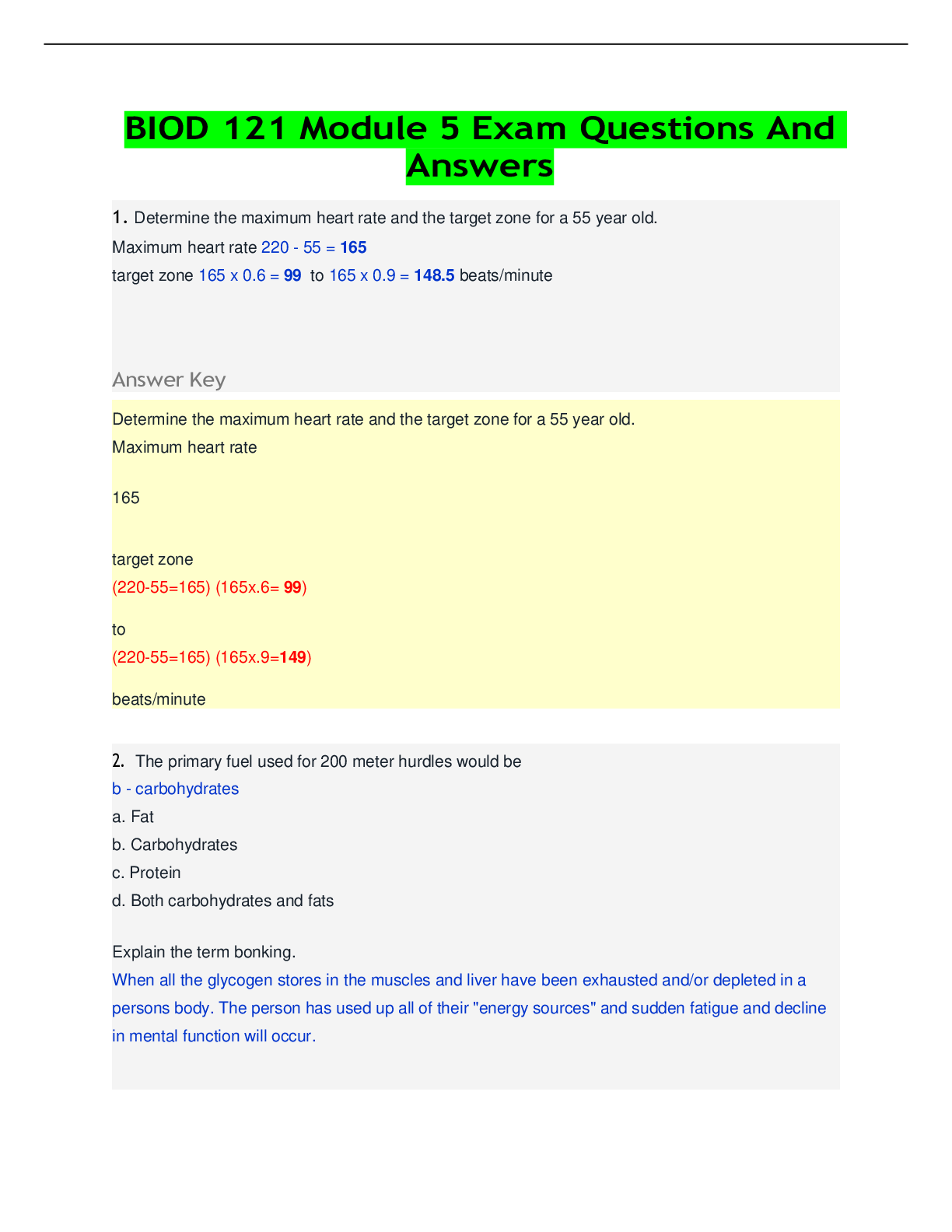
Buy this document to get the full access instantly
Instant Download Access after purchase
Buy NowInstant download
We Accept:

Reviews( 0 )
$7.00
Can't find what you want? Try our AI powered Search
Document information
Connected school, study & course
About the document
Uploaded On
Jan 17, 2022
Number of pages
8
Written in
Additional information
This document has been written for:
Uploaded
Jan 17, 2022
Downloads
0
Views
130


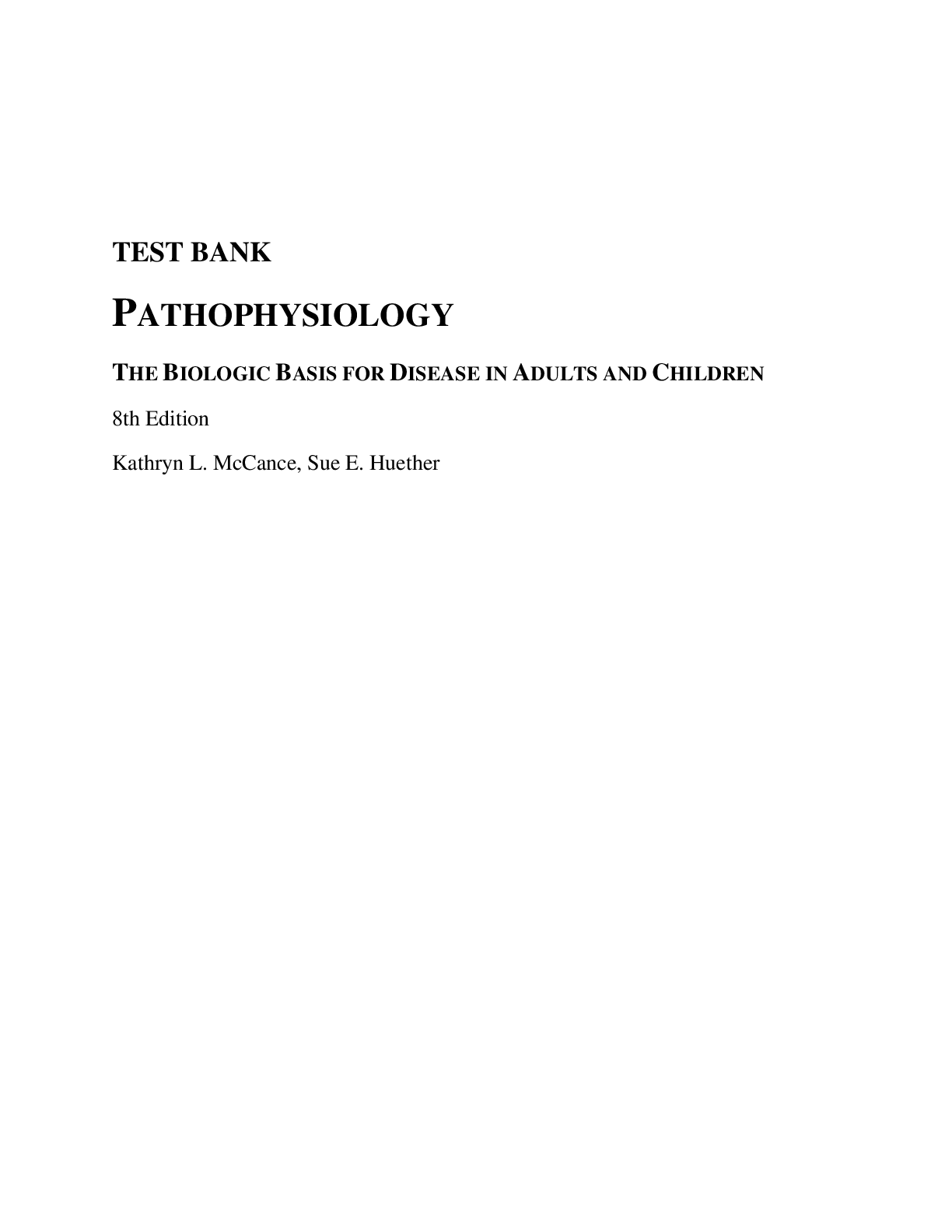

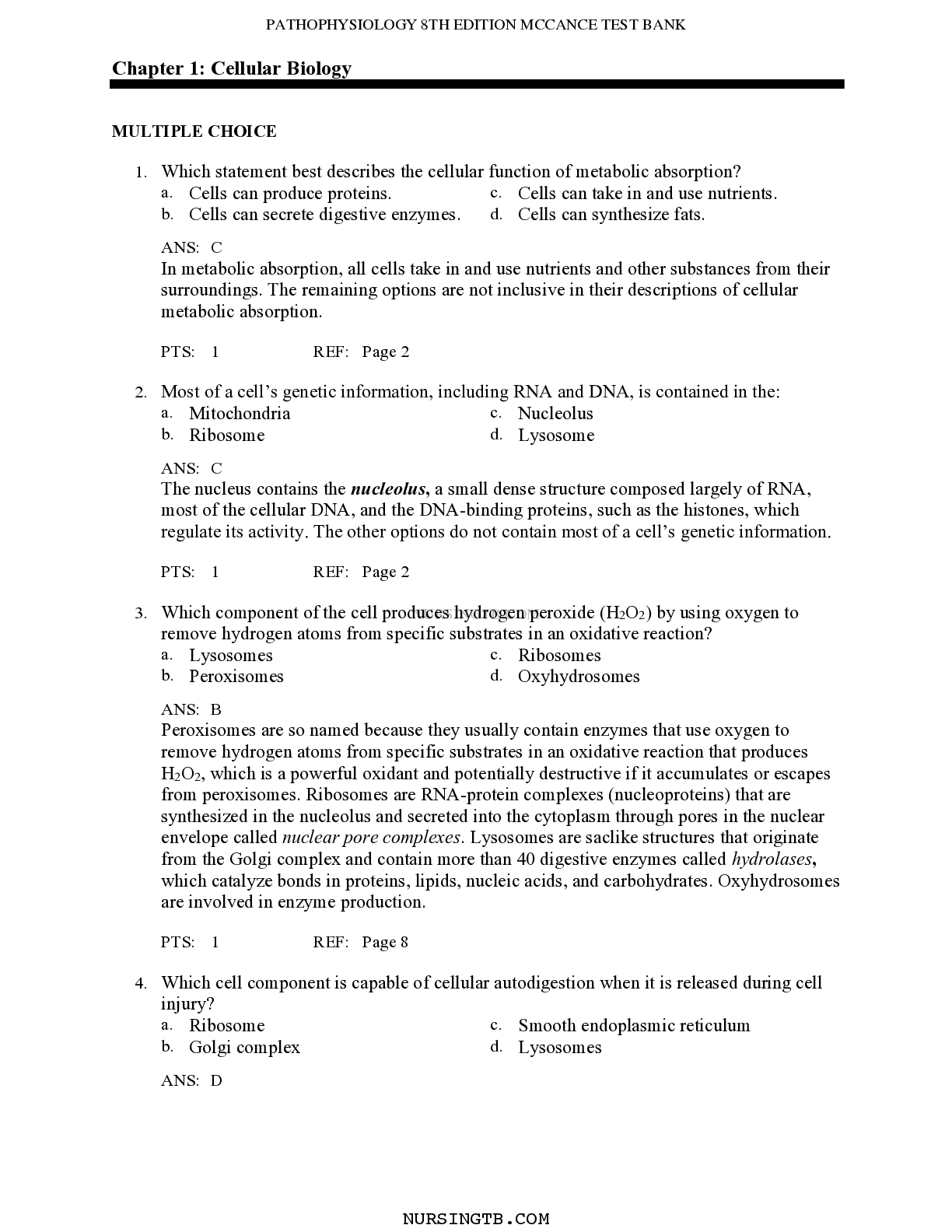
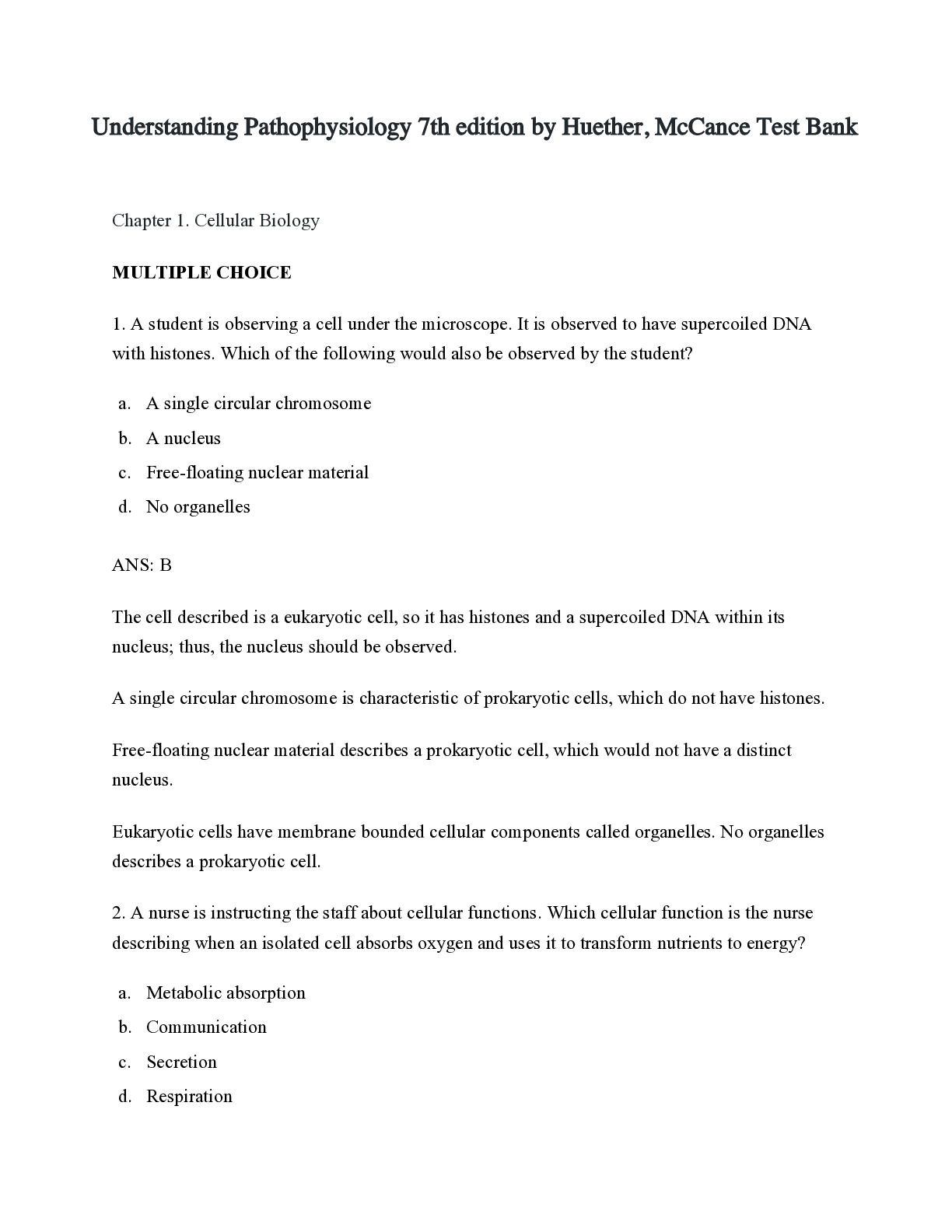
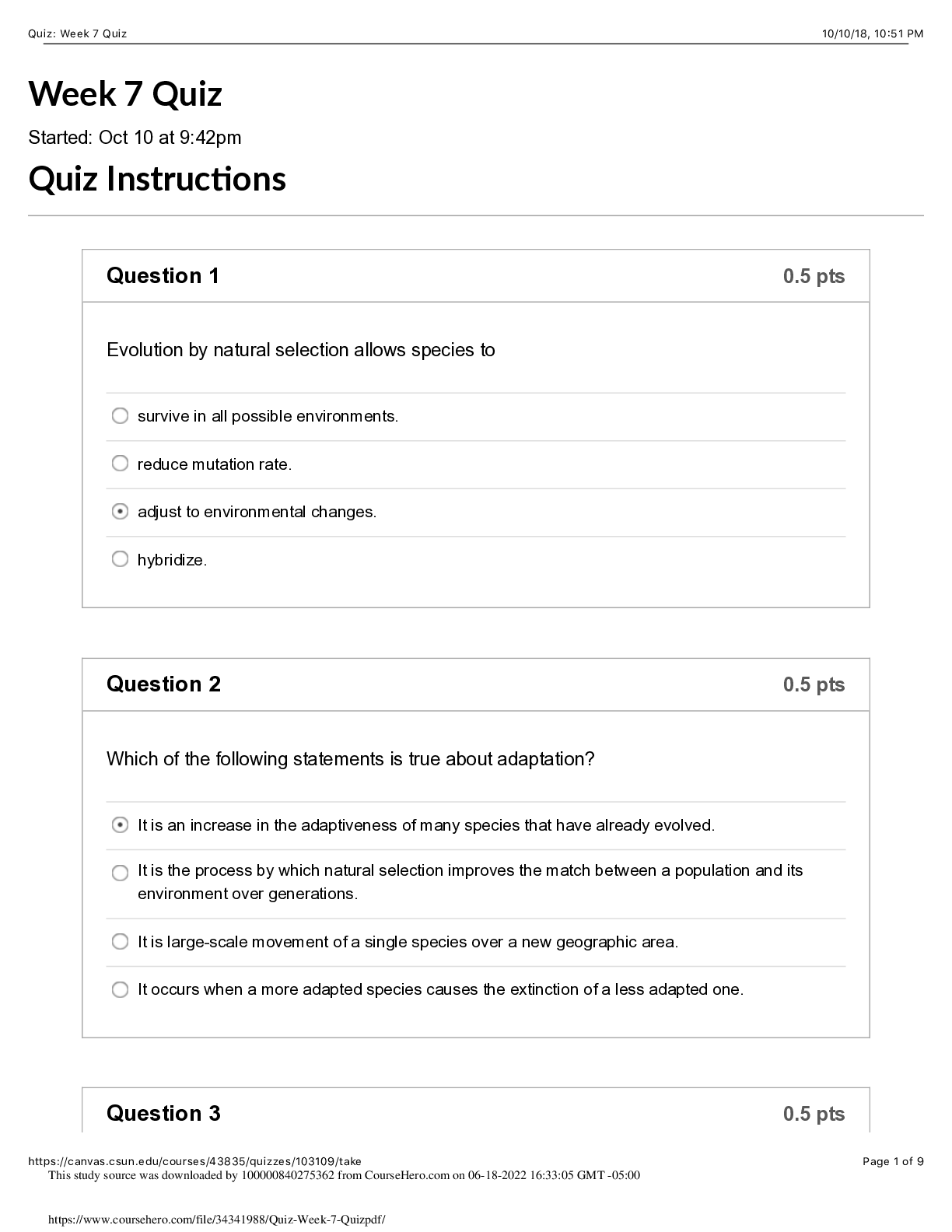


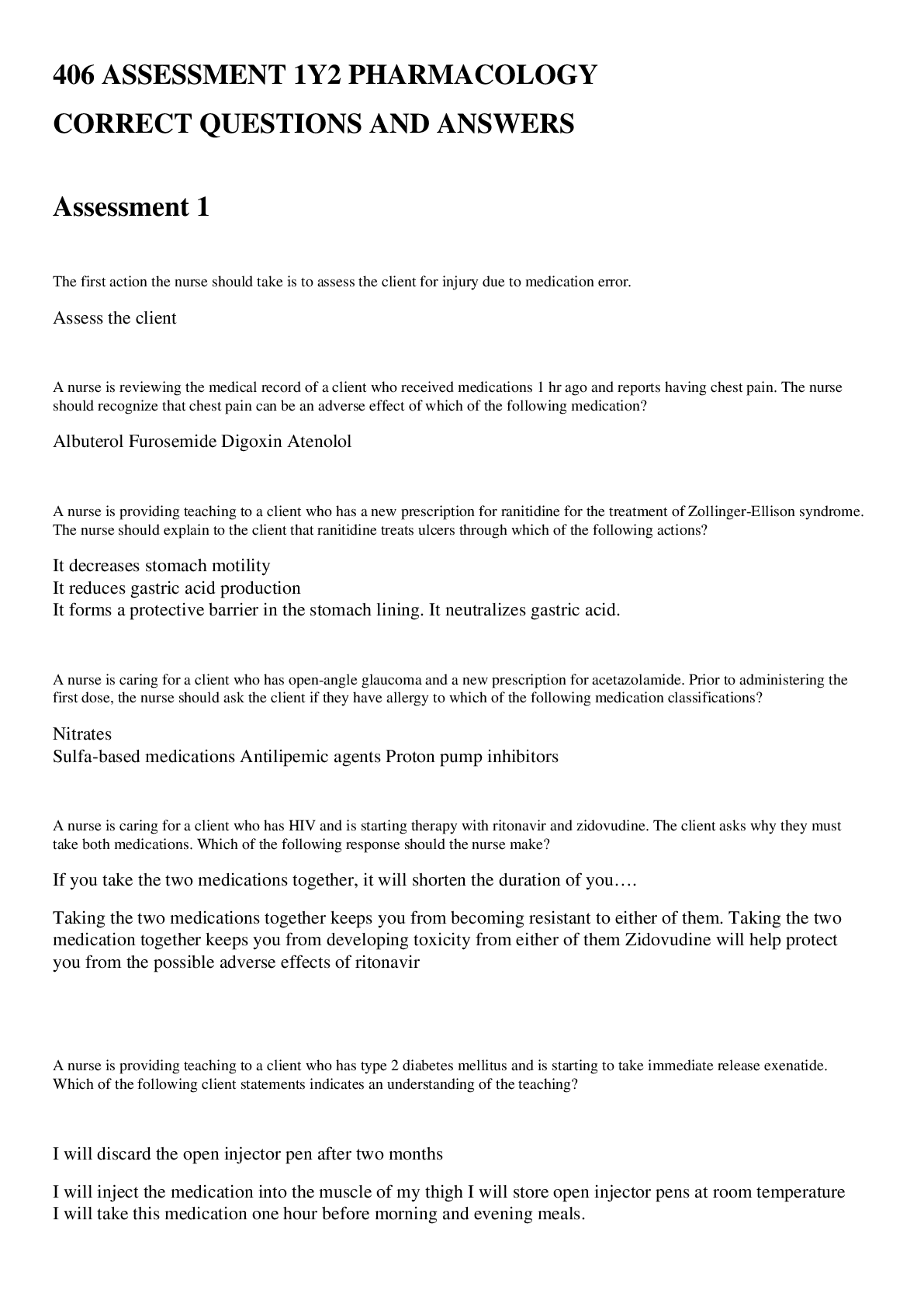
.png)


